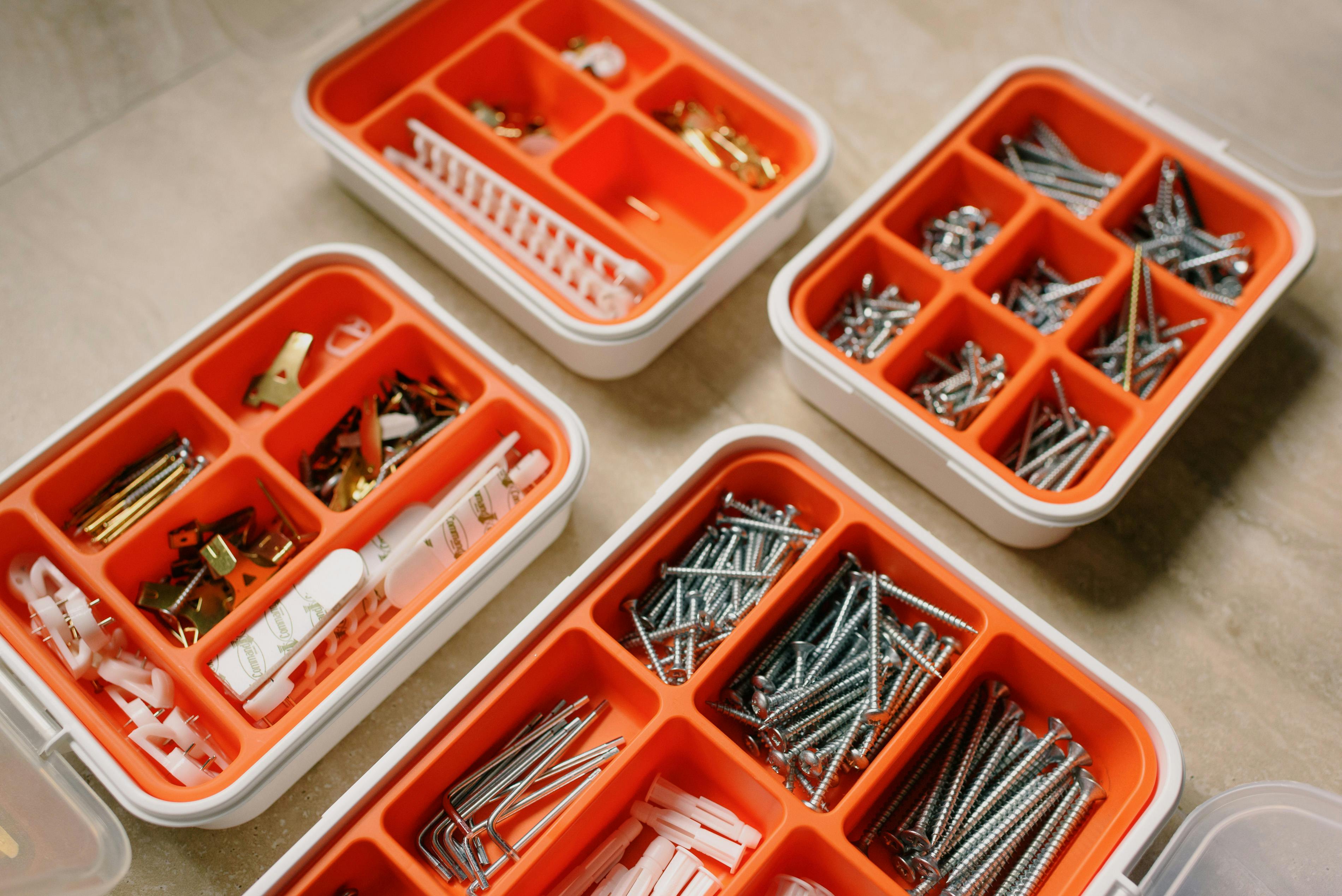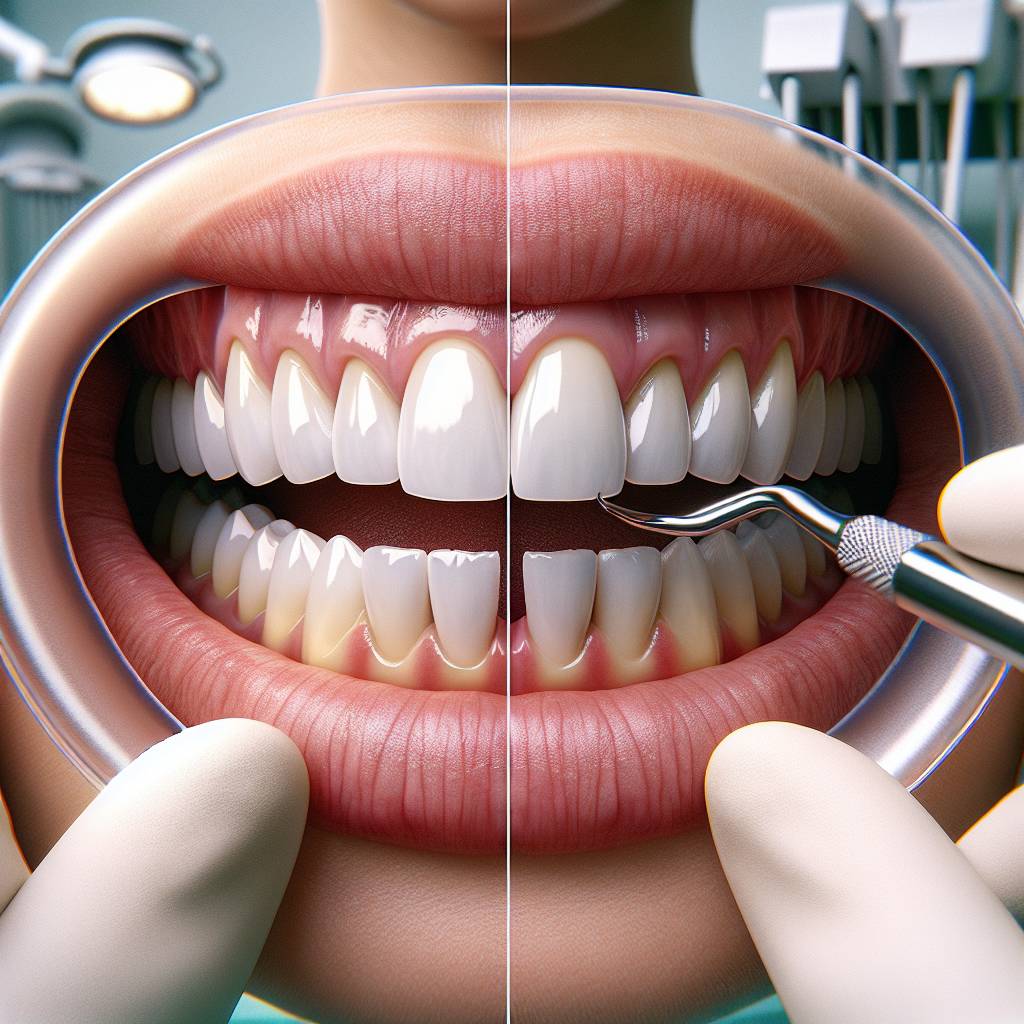Having a gap in your front teeth can be a source of embarrassment and self-consciousness. Fortunately, there are a number of ways to fix this issue. In this article, we’ll take a look at how to fix gaps in your front teeth and the various treatment options available. We’ll cover the advantages and disadvantages of each approach so that you can make an informed decision about which one is right for you.The best way to fix a gap in your front teeth is to visit your dentist and discuss your treatment options. Depending on the size of the gap and the shape of the teeth, your dentist may recommend orthodontic treatment with braces or clear aligners. Your dentist may also suggest using dental bonding, veneers or crowns to fill in the gap. In some cases, a gum graft may be necessary to close the gap. Your dentist will discuss all of these options with you and help you decide which one is best for you.
Dental Treatments for Gapped Teeth
Gapped teeth, also known as diastema, are spaces between two or more teeth caused by a variety of factors. While some individuals may find them aesthetically pleasing, many people seek dental treatments to reduce the gap. Fortunately, there are several treatment options available for closing the gap between teeth.
The most common approach to treat gapped teeth is orthodontic treatment. Orthodontic treatment involves the use of braces or clear aligners to shift the teeth into proper alignment and close the gap. The orthodontic treatment typically takes several months to a year and can involve monthly visits to adjust braces or have new aligners fitted.
If you have gapped teeth but do not want the hassle of braces, there are other options available such as dental bonding or porcelain veneers. Dental bonding is a quick and easy procedure where a tooth-colored resin material is applied to the front surface of the tooth, filling in gaps and improving its appearance. Porcelain veneers are thin shells that are placed on top of your existing teeth in order to close gaps and improve aesthetics. This procedure usually requires multiple visits and can be quite costly but can produce excellent results with long-lasting results.
In some cases, a gummy smile may be causing gaps between teeth due to an excessive amount of gum tissue covering part of your tooth. In this case, it may be necessary to undergo gum contouring surgery in order to remove excess tissue and create a more even gum line which will help close up gaps between your teeth.
No matter what type of gapped teeth you have, there are several effective treatments available that can help close up spaces between your teeth and improve your smile! It is important to discuss all options with your dentist in order to determine which one will work best for you and your lifestyle.
Orthodontic Solutions For Gapped Teeth
Gapped teeth can be caused by a variety of factors, including genetics, teeth grinding, and poor oral hygiene. If left untreated, these gaps can lead to other issues such as tooth decay and gum disease. Fortunately, there are a number of orthodontic solutions that can help close the gaps and improve your overall oral health.
The most common orthodontic solution for gapped teeth is braces. Braces work by gradually moving the teeth into proper alignment over time. They may also include the use of elastics or metal bands to help hold the teeth together while they move into their new positions. In some cases, braces may need to be worn for up to two years in order to achieve desired results.
Invisalign is another option for those looking for orthodontic solutions for gapped teeth. This treatment involves wearing a series of clear plastic aligners that are custom-fitted to your mouth. The aligners gradually shift your teeth into their desired positions over time without anyone else being able to tell you’re wearing them. This makes Invisalign an ideal choice for those who want a discreet orthodontic solution.
For those looking for a more immediate solution, there are also dental bonding procedures available. During this procedure, a composite resin material is used to fill in the gaps between the teeth and make them look more uniform in size and shape. Bonding typically only takes one office visit and can be completed quickly and easily with minimal discomfort or downtime.
Finally, porcelain veneers are another option for closing gapped teeth that can provide lasting results with minimal effort on your part. Porcelain veneers are thin shells that are bonded directly to your existing teeth and can give you an instantly brighter smile in just one appointment. Veneers are highly customizable and can be tailored specifically to your needs in order to achieve natural-looking results that last for years at a time.
No matter which orthodontic solution you choose, it’s important to have regular check-ups with your dentist or orthodontist so that they can monitor your progress and ensure that your treatment is working as expected. With the right care and attention, you’ll soon find yourself with a beautiful smile free from gaps or other imperfections!
Porcelain Veneers to Fill Gaps
Porcelain veneers are a great option for people who want to close gaps between their teeth. Veneers are thin, custom-made shells that are affixed to the front of your teeth, creating a more uniform and aesthetically pleasing smile. While veneers look and feel like natural teeth, they are made from porcelain which is strong and durable enough to last for many years. The porcelain material also reflects light in much the same way as natural teeth, making them virtually undetectable.
Veneers can be used to fill small gaps between the front teeth or larger gaps between the side teeth. Depending on how much of a gap you have, your dentist may recommend either one or two veneers to close it. In some cases, bonding or reshaping of existing tooth structure may also be necessary in order to achieve the desired aesthetic result. Your dentist will evaluate your case and recommend the best course of action.
The process of getting porcelain veneers usually takes two visits to the dentist. During the first visit, your dentist will take impressions of your teeth and send them off to a lab where they will be used to create custom-made veneers for you. Then, during the second visit, your dentist will remove any enamel that is necessary in order for the veneer to fit snugly against your tooth and bond it in place with special dental cement.
Getting porcelain veneers is a great way to close gaps between your teeth and achieve a uniform smile without having to resort to more invasive treatments such as braces or crowns. The procedure is relatively simple and can often be completed in just two visits with minimal discomfort or downtime. With proper care, porcelain veneers can last for many years while still maintaining their original appearance and function.
Cosmetic Bonding To Close Gaps In Teeth
Cosmetic bonding is a popular dental procedure used to close gaps in teeth. It is a relatively simple procedure that can be done in one visit to the dentist’s office. The process involves applying a tooth-colored composite resin material to the affected tooth and shaping it into the desired shape. The material is then hardened with a special light and polished for a natural look. The entire process usually takes about 30 minutes to an hour, depending on the extent of the bonding needed. Cosmetic bonding can be used to close gaps between teeth, fill in chips or cracks, reshape misshapen teeth, and even cover up stained or discolored teeth. It is also a great option for those who want to avoid more invasive treatments such as veneers or crowns.
The composite resin material used in cosmetic bonding is very strong and durable, making it an ideal choice for many people looking to close gaps in their teeth. It also has a natural look that blends in with your existing teeth, so it won’t be obvious that you have had any dental work done. In addition, it is much less expensive than other types of cosmetic dentistry procedures and usually does not require any anesthesia.
Before undergoing cosmetic bonding, it is important to discuss all of your options with your dentist so you can make an informed decision about which treatment will best meet your needs. Your dentist will also be able to provide you with information about how long the results should last and what type of maintenance may be required after treatment. With proper care and maintenance, cosmetic bonding can give you a beautiful smile that lasts for years to come!

Closing Gaps Between Teeth
Gaps between the teeth are a common dental issue that can affect your smile and your self-confidence. Fortunately, there are a variety of options available for closing gaps between teeth. Orthodontic treatment is one of the most common methods used to close gaps between teeth, but there are other options that may be more suitable depending on the size and location of the gap. Here are some of the most popular options for closing gaps between teeth.
Braces
Braces are one of the most common and effective ways to close gaps between teeth. Braces work by gradually shifting your teeth into their proper positions over time. Your dentist will use brackets and wires to attach the braces to your teeth, which will help guide your teeth into their desired positions. Braces can take anywhere from six months to two years to achieve optimal results, so it’s important to be patient during this process.
Veneers
Veneers are another popular option for closing gaps between teeth. Veneers are thin shells made out of porcelain or composite resin that are bonded onto the front surface of your teeth. They’re designed to cover up any imperfections or discolorations in your teeth, as well as fill in any gaps between them. Veneers can last for up to 15 years with proper care, making them a long-term solution for closing gaps between your teeth.
Dental Bonding
Dental bonding is another option for closing gaps between teeth that doesn’t require any major changes or alterations to your existing tooth structure. During dental bonding, a composite resin material is applied directly onto your existing tooth structure and then hardened with a special light. The material is then shaped and polished so that it blends in perfectly with the surrounding tooth enamel. Dental bonding can be completed in just one visit and typically lasts for up to five years before needing to be replaced.
Implants
Finally, if you have larger gaps between your teeth due to missing or damaged teeth, dental implants may be an option worth considering. Dental implants involve surgically placing artificial roots into your jawbone where they will act as anchors for replacement crowns or bridges that will close any large gaps in your smile. Dental implants offer a permanent solution for missing or damaged teeth, but they can be quite expensive and require multiple visits over several months before they are fully restored.
Pros and Cons of Closing a Gap With Dental Bonding
Dental bonding is a popular and economical way to close gaps between teeth. It is a procedure in which a tooth-colored composite material is applied to the surface of the tooth, shaped and hardened with a special light. This material can then be used to fill the gap between teeth, and it looks and feels just like natural teeth. While dental bonding can be an effective way to close gaps between teeth, there are both pros and cons associated with this procedure.
One of the primary advantages of dental bonding is that it can be completed in just one visit to your dentist’s office. The material used in dental bonding sets quickly, so it does not take long for your dentist to shape, polish, and harden the material on your tooth. This means that you will not need multiple visits or have to wait for a lengthy period of time for the gap between your teeth to be closed. In addition, dental bonding is relatively inexpensive when compared to other cosmetic treatments such as porcelain veneers or crowns.
However, there are also some disadvantages associated with dental bonding. One of the main drawbacks of this procedure is that it is not as durable as other options such as porcelain veneers or crowns. The material used in dental bonding can chip or wear away over time, so it may need to be replaced sooner than other treatments. In addition, since the material does not bond directly with your natural enamel like other treatments do, it can cause your teeth to appear slightly larger than they were originally. Finally, since the material used in dental bonding cannot be whitened like natural enamel can, any staining that occurs over time cannot be removed.
Overall, dental bonding can be an effective way to close gaps between your teeth without spending too much money or waiting too long for results. However, it does have its drawbacks such as being less durable than other options and not being able to whiten like natural enamel can. Be sure to talk with your dentist about all of your options before making a decision about how you want to close any gaps between your teeth.
Cost of Fixing a Gap in Your Front Teeth
The cost of fixing a gap in your front teeth will depend on the severity of the gap and the type of treatment you choose. If you have a small gap, you may be able to get it filled with composite bonding, which is a non-invasive procedure that can be done in one visit. This type of procedure typically ranges from $300-$600 per tooth. If your gap is larger or more severe, you may need to get braces or Invisalign to close the gap. Braces can range from $2,000-$7,000 depending on the severity and length of time needed for treatment. Invisalign is typically more expensive than braces and can cost between $4,000-$8,000 depending on the type of case and length of treatment.
Regardless of which option you choose, it’s important to consult with an experienced dentist or orthodontist before making any decisions. They can help determine which treatment plan would work best for your specific situation and provide an estimate for what it will cost. It’s also important to factor in any additional costs such as follow-up appointments or maintenance treatments that may be required after any initial treatments are complete.

Conclusion
The most common and effective way to fix a gap in front teeth is through orthodontic treatments. This includes braces, clear aligners, and other corrective devices that can help shift the teeth into their desired positions. Additionally, dental bonding and veneers can also be used to fill in the gaps between the teeth.
No matter which method you decide to use, it is important to consult with a qualified orthodontist or dentist first. They will be able to provide you with the best advice for your individual situation, and ensure that your treatment plan is tailored correctly for your needs.
Overall, fixing a gap in front teeth is not an impossible task. With the right guidance and technique, you could have a beautiful smile that you can be proud of in no time at all!

